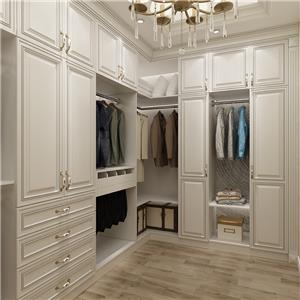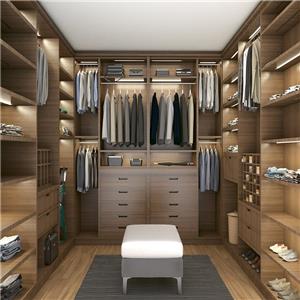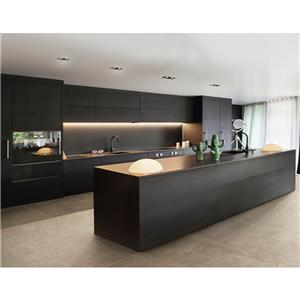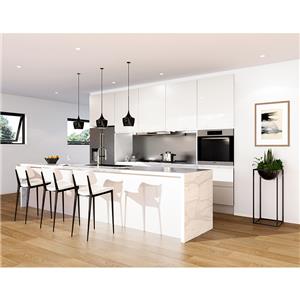Analysing This Year's Kitchen Cabinet Trends:Three Key Considerations and Four Steps for Selecting Cabinets
Analysing This Year's Kitchen Cabinet Trends:Three Key Considerations and Four Steps for Selecting Cabinets
In recent years, the kitchen has transcended its role as a mere functional space within the home, becoming a direct reflection of domestic living standards. With integrated kitchens now increasingly commonplace, cabinetry products have evolved in terms of materials, functionality and design, following their own trends. Cutting-edge technology, novel materials, innovative techniques and fresh design philosophies continue to evolve and revolutionise the sector.
Although many products appear similar in appearance, style, and colour, significant differences exist in their intrinsic quality. Beyond variations in cabinet materials, there is a world of difference between cabinets produced by professional manufacturers using automated assembly lines and those crafted by hand in small workshops. How should consumers make their choice? Experts advise consumers that the most crucial step is to scrutinise every detail. The key areas to focus on are as follows:
I. First, examine the edge banding of the panels.
High-quality cabinetry features fine, smooth, and pleasant-to-the-touch edge banding, with straight, polished seams and precise joints. Professional manufacturers employ straight-line edge banding machines to complete multiple processes in one pass: banding, trimming, edge finishing, chamfering, and polishing. This ensures even adhesive application, consistent pressure during bonding, and precise dimensional accuracy adjusted to the optimal position, guaranteeing the finest fit. In contrast, small workshop-style factories apply adhesive with brushes, press the edging by hand, trim edges with a utility knife, and polish using manual polishers. This results in uneven pressure, causing many areas to be poorly secured. It also leads to the release of toxic gases such as formaldehyde into the air.
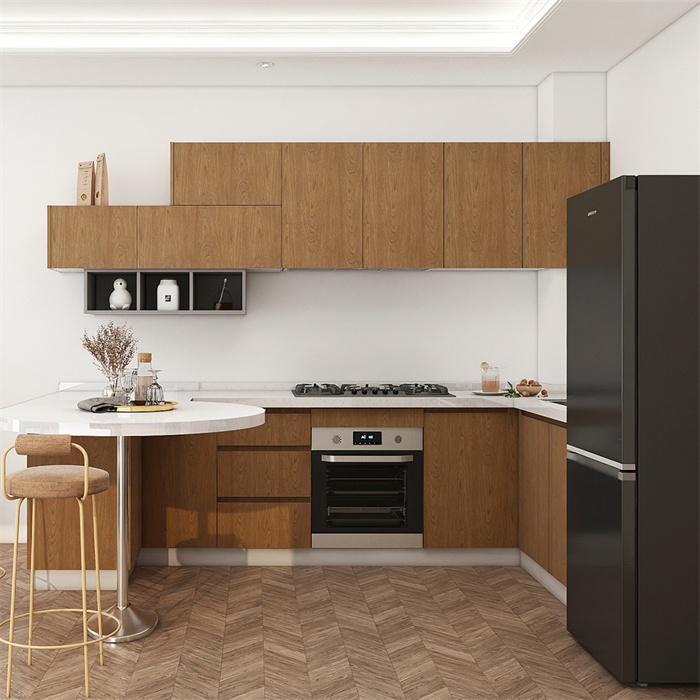
II. Secondly, examine the design and craftsmanship.
High-quality cabinet worktops typically feature a front splash guard—a raised edge to prevent water dripping downwards. Beneath the worktop edge, a water-stopping channel is incorporated, forming a groove akin to the eaves of a traditional tiled roof. Wall cabinets are generally reinforced with support bars to enhance load-bearing capacity and prevent warping. In contrast, inferior cabinets often lack these detailed refinements. Additionally, inspect the drawer runners for smooth operation and ensure they are not loose or wobbly. Check that the gaps between drawers are uniformly spaced.
III. Thirdly, examine the lacquer finish.
Professional manufacturers typically employ high-gloss lacquering techniques. Identifying this finish is straightforward: hold a sample under light and observe whether the light's projection appears sharply defined on the sample panel. A superior lacquer finish should be sufficiently reflective to serve as a mirror. Additionally, high-quality lacquer offers excellent abrasion resistance and ease of cleaning. Test this by lightly scratching the sample panel with the tip of a ballpoint pen, then wipe the mark with a clean sheet of paper to see if it can be removed.
The sheer variety of cabinet materials, coupled with their often misleading names, frequently leaves ordinary consumers relinquishing their choice to sales assistants. Material nomenclature is highly technical, involving physical properties and chemical designations that are beyond the average person's comprehension. Rather than relying on descriptions, trust your eyes: judging quality by the material's physical form is the most direct and reliable approach. Here are several common methods for identifying cabinet materials:
1. Standard Decorative Panels
Method: Smell the odour
High-quality cabinet panel cross-sections exhibit a pristine white appearance, crafted from pulverised wood after bark removal. A distinct woody fragrance is perceptible when approaching the material. For instance: German Egger boards available on the market. Slightly inferior options include domestic particleboard, predominantly manufactured from branches, bark, and twigs. Cross-sections reveal coarse particles of bark and twigs. Due to the substantial adhesive required for bonding, these materials emit a noticeable odour.
2. Fire-retardant panels
Method: Measure thickness
As the kitchen is a place of cooking fires, fire safety is paramount. Fire-retardant panels feature surfaces incorporating siliceous materials that provide flame-retardant properties. Distinguishing these from standard decorative panels is straightforward: fire-retardant panels have a surface layer approximately 0.8–1.2mm thick, whereas decorative panels are thinner, as discernible from cross-sections. The surface layer of decorative panels consists of paper laminate, which lacks flame-retardant properties.
3. Engineered Stone Worktops
Method: Oil Infusion
Whether termed quartz stone or crystal stone, domestically produced or imported, engineered stone should primarily consist of composite acrylic or pure acrylic. This ensures the worktop's physical properties such as stain resistance and impact resistance, though density and hardness may vary. However, some low-cost products prioritise profit margins by using calcium powder as the primary material. Calcium powder boards exhibit high permeability yet poor stain resistance. After domestic use for a period, issues emerge: susceptibility to cracking, difficulty in removing water marks and stains, and yellowing over time. To distinguish quality, conduct a simple test: pour a small amount of oil onto the surface. If more than half seeps through, it likely indicates inferior calcium powder material.
4. Moisture-Resistant Board
Method: Check the labelling
Inadequate moisture control in kitchens not only shortens cabinet lifespan but, over time, leads to mould growth and bacterial proliferation, directly compromising user health. Consequently, moisture-resistant boards are frequently used within cabinet interiors. However, as products cannot speak for themselves, verification remains essential. The technical term for moisture-resistant board is melamine-faced chipboard. This is essentially chipboard with melamine resin incorporated into its core. Standard chipboard typically features green particles within the board body, known as a green core. This green core serves as the board's moisture-resistant indicator.
How to buy kitchen cabinets? ➡
Exclusive Interview with Homeowner ➡
Struggling to turn around in your kitchen? ➡
Is the trend towards "de-living-rooming" design catching on? ➡

